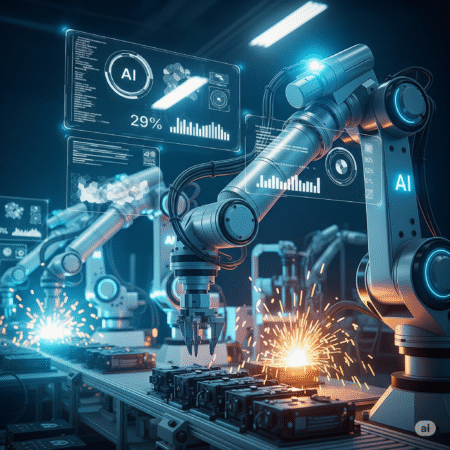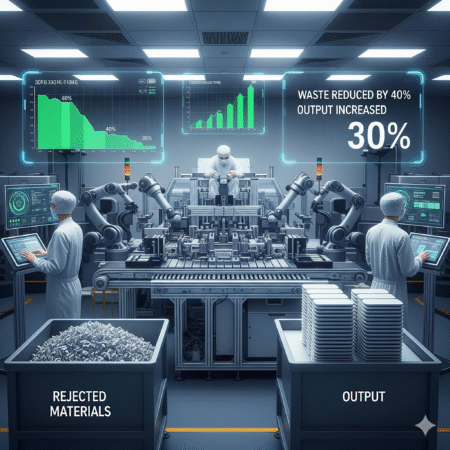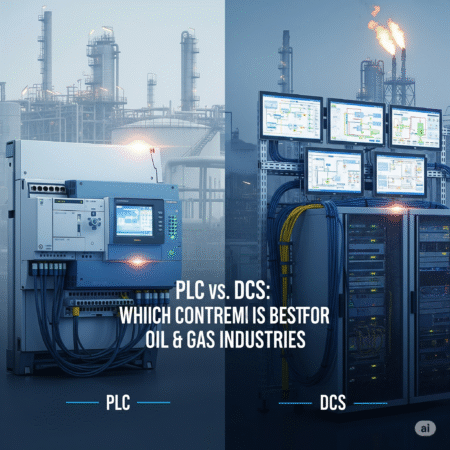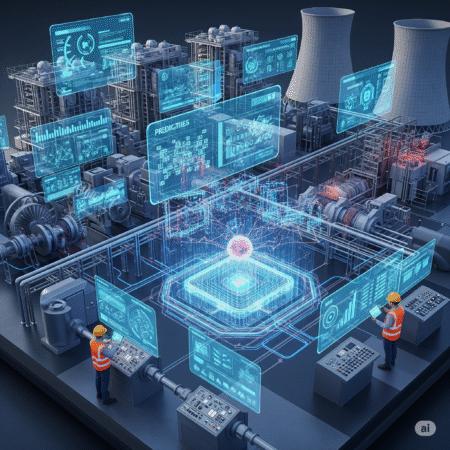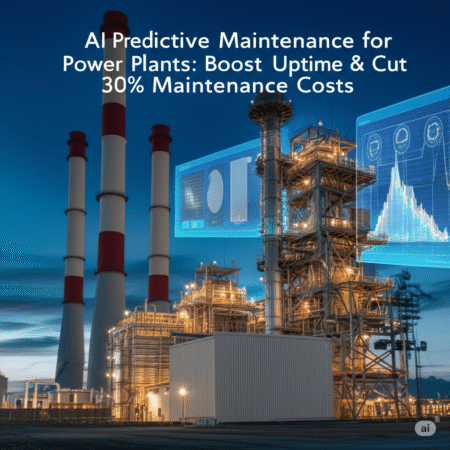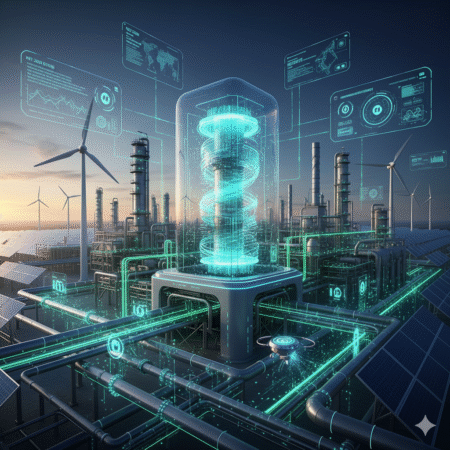
- Introduction: Beyond Traditional Automation
- Why AI Makes Robotics Smarter
- Core Benefits: Precision, Speed & Adaptability
- AI Technologies Powering Modern Robots
- Real-World Case Studies Across Industries
- Implementation Roadmap: From Pilot to Scale
- Challenges and How to Overcome Them
- Future Trends: Edge AI, GenAI & Collaborative Robots
- Comparative Framework: Traditional vs AI Robotics
- Conclusion & Strategic Takeaways
- FAQs
Introduction: Beyond Traditional Automation
For decades, industrial robots simply repeated pre-programmed tasks – capable, but inflexible. Today, AI-powered robotics push this further: they learn, adapt, and optimize in real-time. Whether handling delicate electronics or lifting heavy loads on offshore rigs, these robots are reshaping productivity altogether.
Why AI Makes Robotics Smarter
- Adaptive Intelligence: Robots adjust grip, speed, and trajectory in response to live feedback.
- Conditional Autonomy: They can decide whether to proceed, wait, or alert human intervention.
- Continuous Learning: Each job refines the performance of the robotic model.
Location oil rigs or remote drilling sites benefit when robots can respond autonomously – no waiting on cloud commands.
Core Benefits: Precision, Speed & Adaptability
Precision
AI precision brings accuracy down to microns – ideal for electronics, semiconductor assembly, or weld seams. Robots can consistently place tiny components or apply precise finishing tolerances.
Speed
AI optimizes efficiency by:
- shortening cycle times
- minimizing repositioning or reloading delays
- reducing scrap through real-time defect detection
In one automotive plant, AI robots cut cycle time by 22% and lowered defect rates by 18%.
Smart Adaptability
If a sensor detects part misalignment, AI can initiate a corrective path program – even mid-cycle. This adaptability reduces inspection downtime and improves line throughput.
AI Technologies Powering Modern Robots
| AI Technology | Role in Robotics |
|---|---|
| Computer Vision | Recognizes parts, guides real-time movement |
| Deep Learning | Classifies defects or optimizes grasp strategies |
| Reinforcement Learning | Learns optimal motions via feedback trials |
| Sensor Fusion | Merges lidar, ultrasonic, vision sensors |
| NLP Interfaces | Enables voice commands or human-robot interaction |
These technologies combine to let robots operate safely and intelligently alongside human workers.
Real-World Case Studies Across Industries
Automotive Manufacturing
Ford used AI-guided robotic arms to detect micro-cracks in engine castings – catching defects 3x faster than human inspectors.
Oil & Gas
Shell Deploys autonomous crawlers with AI vision to inspect pipeline welds. Early corrosion detected via drone imagery prevented potential environmental disasters.
Logistics / FMCG
Amazon’s Kiva robots use AI navigation to retrieve inventory dynamically, adapting paths in real time to avoid congestion and hazards.
Pharmaceuticals
In cleanrooms, AI-powered robots transfer sterile components under real-time motion planning – minimizing contamination risk and maximizing precision.
Implementation Roadmap: From Pilot to Scale
- Assess Asset Readiness: Identify high-frequency or high-value tasks ideal for robotic automation.
- Pilot Deployment: Begin with one robot line, integrate feedback loops, monitor KPIs.
- Data Infrastructure: Deploy sensors and edge computing to support real-time inference.
- AI Model Training: Use historical & live sensor data to train and validate.
- Scale & Iterate: Expand to other lines or sites, replicate setup and fine-tune AI models.
Key KPI set: downtime reduction, yield improvement, energy usage, and unit cost.
Challenges and How to Overcome Them
- Cost & CapEx: Start with ROI-focused pilot projects.
- Integration with Legacy Systems: Use SCADA and middleware solutions for interoperability.
- Cybersecurity: Secure robotic networks with zero trust, regular audits, and encrypted communication.
- Skills Gap: Upskill engineers on robotics/AI; start internal robotics center of excellence (CoE).
Future Trends: Edge AI, GenAI & Collaborative Robots
- Edge AI robots process commands internally – minimizing latency and ensuring reliability.
- Generative AI designs optimized robot tasks, parts, and trajectories.
- Cobots: Human-robot teams collaborate seamlessly using gesture and voice control interfaces.
Meetings, repairs, and even complex paths may soon be inherently adaptive – robots crafting their own logic via GenAI.
Comparative Framework: Traditional vs AI Robotics
A side-by-side comparison:
| Feature | Traditional Robots | AI-Powered Robots |
|---|---|---|
| Task Programming | Rigid, manual | Adaptive, automated |
| Quality/Precision | Fixed tolerances | Dynamic real-time adjustments |
| Downtime Sensitivity | High – manual error recovery | Self-correcting, fewer interruptions |
| Scalability | Manual redeployment | Model-based replication |
| Human Interaction | Limited | Collaborative & intuitive |
This demonstrates why AI robotics is clearly the next-gen standard.
Conclusion & Strategic Takeaways
AI-powered robotics isn’t just automation – it’s cognitive automation.
If you’re aiming for productivity gains, precision improvements, or enhanced resilience, robotics with AI is now a strategic necessity – especially for manufacturers and automation-heavy industries in US, UK, and Canada.
Approach methodically, measure KPIs early, scale on success.
FAQs
Q1: Can AI-powered robots adapt to multiple product variants?
Yes – with machine learning vision models, robots can switch tasks dynamically.
Q2: What’s the fastest ROI window?
Depends on complexity, but many factories see ROI within 12 months.
Q3: Are AI robots safe to operate around humans?
Yes – modern AI cobots include motion sensors and emergency stop features for safe coexistence.
Want to stay updated on AI robotics, industrial AI, and automation strategy?
👉 Subscribe to EngineerDaily.News for weekly expert insights, tools reviews, and use-case breakdowns delivered straight to your inbox.
